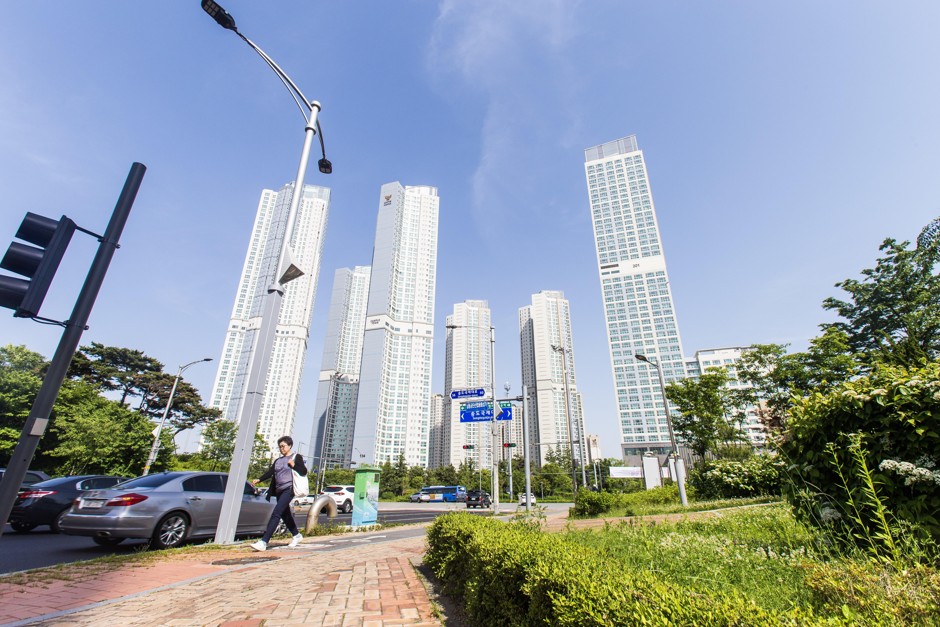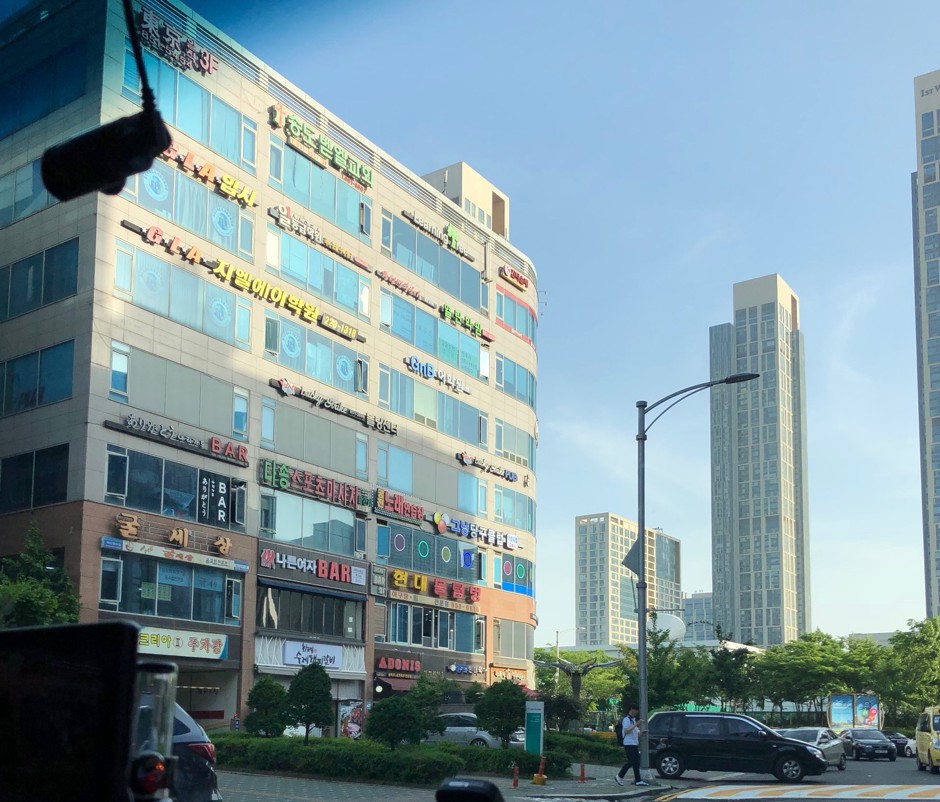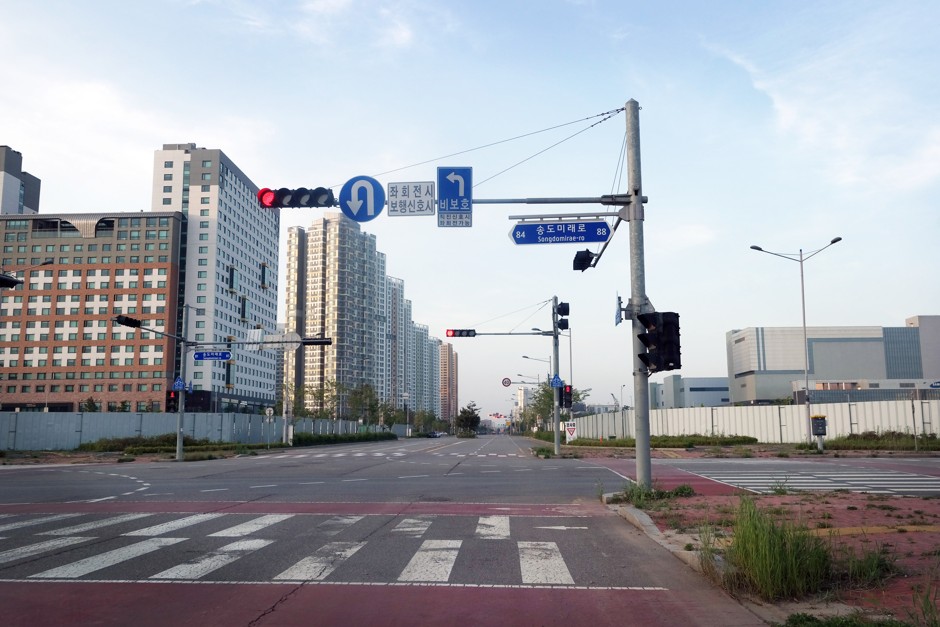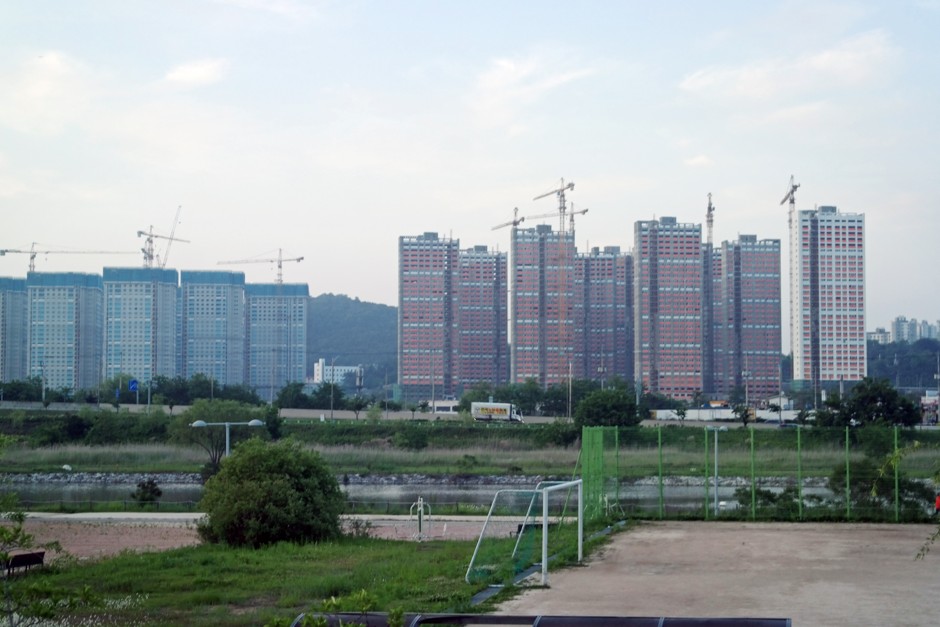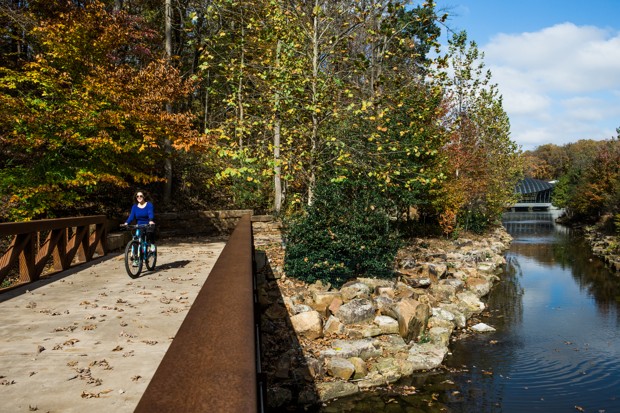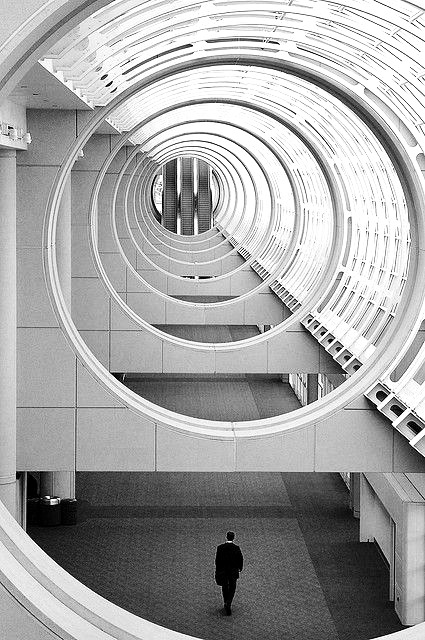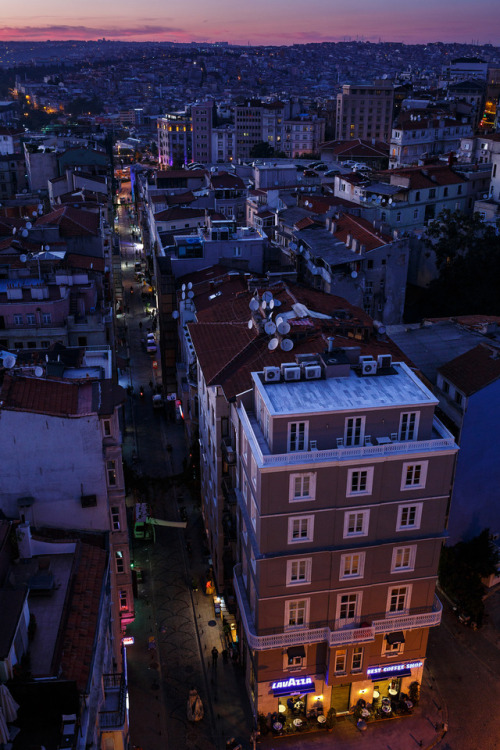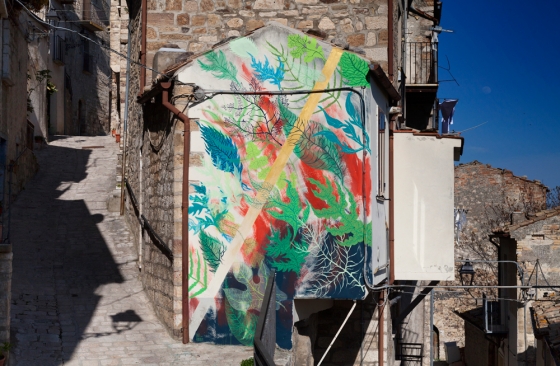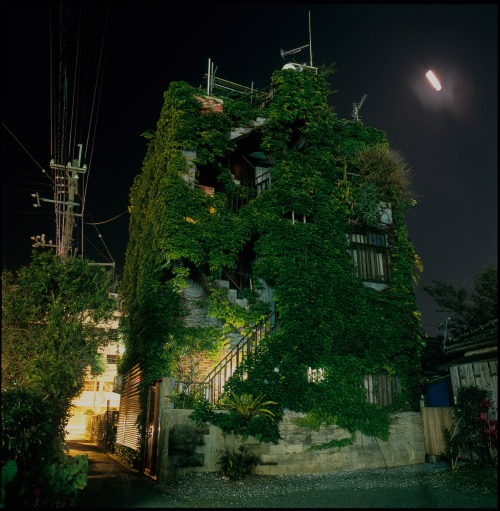John F. Ross | The Promise of the Grand Canyon | Viking | July 2018 | 24 minutes (6,540 words)
In April 1877, the normally staid proceedings of the National Academy of Sciences’ annual meeting in Washington took a dramatic turn. For two weeks, members had listened to the nation’s most distinguished scientists speak on topics ranging from lunar theory to the structures of organic acids. Members enjoyed “Results of Deep Sea Dredging,” by the son of the recently deceased scientist Louis Agassiz. The Academy had invited G. K. Gilbert to deliver a paper, “On the Structure of the Henry Mountains,” so named in honor of the Academy’s president by Powell’s survey. On the final day, the geologists took the floor, whereupon erupted a furious discussion of the American West. The rub lay between those who studied the fossils and those who examined the rock strata, each drawing wildly different conclusions about the age of their subjects.
Such was the fervor of the discussion that the geologists soon jumped to their feet in animation and anger. “[W]hat they might do if they once went fairly on the rampage, it is impossible to say,” wrote one correspondent. Hayden rose to argue that no great degree of difference existed between the two sides, but others immediately shouted him down.
Yet while the rather scholarly debates over dating and provenance might animate the geologists, that day would be remembered not for these petty theatrics, but for an address Powell delivered. In it, the Major stepped away from the fields of geology and out of academic realms to address a topic that pressed right to the heart of American democracy. During the Townsend Hearings three years earlier, he had raised the issue of the West’s extreme aridity and the difficulty of irrigating much of it — but he had thought a lot more about it since then, and the map he now unrolled in front of America’s top scientists carried startling implications. He had bisected the map of the nation from Mexico to Canada with a vertical line rising from central Texas up through Kansas, east of Nebraska, and through Minnesota, roughly approximating the 100th meridian. At this line the arid West begins with startling consistency, the tall prairie grass cedes to short grass and less fertile soils. Trees appear rarely west of the line, except at high altitudes and in the Pacific Northwest, while forests dominate the east: The 100th meridian elegantly divides two separate lands, one composed of wide horizontal vistas, so much of the other defined by its vertical prospects.
The land west of the 100th meridian, Powell announced, could not support conventional agriculture. Surprise met this bold statement, for the line clearly indicated that much of the great plains — including all of Colorado, Montana, Wyoming, and Idaho, plus Arizona and New Mexico — was essentially unfarmable. Here was the professor at his best: clear, authoritative, dramatic. He had everyone’s attention.
Powell had drawn an isohyet, a line connecting areas that experience equal volumes of annual rainfall. The relatively humid lands to the east of this line experience twenty or more inches of annual rainfall, the unquestionably arid lands to the west receiving less than that, except some narrow strips on the Pacific coast. The twenty-inch isohyet offered a valuable generalization — conventional agriculture simply could not work without twenty or more inches a year, unless supplemented by irrigation. Except for some lands offering timber or pasturage, the far greater part of the land west of the line was by itself essentially not farmable. Access to the transformative powers of water, not the availability of plots of land, proved a far more valuable commodity. By now, any land through which streams passed had all been acquired, some of these owners charging those less fortunate for irrigation water. “All the good public lands fit for settlement are sold,” Powell warned. “There is not left unsold in the whole United States land which a poor man could turn into a farm enough to make one average county in Wisconsin.”
Much of what Powell reported was not exactly new, but no one had presented the data so comprehensively and convincingly — and not anyone so famous as the Major. Few, of course, doubted the region’s aridity. But in one powerful moment, Powell had claimed that the nation’s traditional system of land use and development — and thus America’s present push west — simply would not work. The debate that Powell provoked that late April day drew immediate and blistering response. The land agent for the Northern Pacific Railway, itself the beneficiary of a government grant of nearly four million acres, hammered back at Powell’s “grave errors.” “[P]ractical farmers, by actual occupancy and cultivation, have demonstrated that a very considerable part of this ‘arid’ region, declared by Major Powell as ‘entirely unfit for use as farming lands,’ is, in fact, unexcelled for agricultural purposes.” Others responded similarly. Powell clearly had touched a raw nerve. Over the next several years, he would have much more to say on the matter, igniting a veritable firestorm. While the other surveyors limited themselves to covering as much ground as possible, Powell now wrestled with the startling implications for the ongoing development of the West — and what that meant for the American democracy he had fought so hard to save.
***
For most of the first half of the 19th century, eastern America’s conception of the western portion of North America could be spelled out in three words: Great American Desert. That originated during the Long Expedition of 1819, when President James Monroe directed his secretary of war to send Stephen H. Long of the U.S. Army Corps of Topographical Engineers with a small complement of soldiers and civilian scientists on a western reconnaissance. Secretary of State John Quincy Adams had just negotiated a treaty with Spain that ceded Florida to the United States and drew a border between the two countries running across the Sabine River in Texas, west along the Red and Arkansas rivers, and all the way to the Pacific. Eager to know more about the border and the new western territory, Monroe had the secretary of war direct Long to follow the Platte River up to the Rocky Mountains, then trace south and back east along the new border.
The energetic New Hampshire–born West Pointer envisioned himself the successor to Meriwether Lewis and William Clark — indeed, over the course of five expeditions, he would cover 26,000 miles, and mount the first steamboat exploration up the Missouri into Louisiana Purchase territory. His name would grace the peak that Powell was first to climb. On this expedition, Long split his group into two, sending one party along the Arkansas while he with the rest headed south to chart the Red River. Long’s men, often parched and starving, battled a violent hailstorm, sometimes resorted to eating their horses, and negotiated their way past a band of Kiowa-Apaches. But the maps they carried were so atrociously inaccurate that the river they followed for weeks was not the Red at all.
***
Three years after Long’s party returned home, expedition member Edwin James published the three-volume Account of an Expedition from Pittsburgh to the Rocky Mountains. Long’s ordeal imbued him with little affection for the “dreary plains” they had traversed. The Great Plains from Nebraska to Oklahoma he found were “wholly unfit for cultivation and of course uninhabitable by a people depending on agriculture.” He added: “The traveler who shall at any time have traversed its desolate sands, will, we think, join us in the wish that this region may forever remain the unmolested haunt of the native hunter, the bison, the jackall.” The accompanying map labeled the area a “Great Desert,” terminology that soon fully flowered into the “Great American Desert,” a colorful appellation that would stick to the indefinable sections of the West for the next generation. Long believed that this desert wilderness served as a natural limitation on American western settlement, acting as an important buffer against the Mexican, British, and Russians, who claimed the western lands beyond. That compelling assertion seemed to resonate in the public imagination, locking into place the notion of a vast desert dominating the nation’s western midsection. “When I was a schoolboy,” wrote Colonel Richard Irving Dodge in 1877, “my map of the United States showed between the Missouri River and the Rocky Mountains a long and broad white blotch, upon which was printed in small capitals THE GREAT AMERICAN DESERT — UNEXPLORED.
Even though some early trappers and mountain men had brought back word of a land often far from desertlike, the idea persisted. In 1844, when U.S. naval officer Charles Wilkes published his five-volume Narrative of the United States Exploring Expedition, it included a map of upper California. Inland from the well-detailed Pacific coast lay the Sierra Nevada, while the front range of the Rockies marked the map’s eastward extension. In between the ranges lay a vast, wedge-shaped blank space, without a single physical feature delineated. Unable to leave such a realm blank without remark, Wilkes had inserted a simple paragraph reading “This Plain is a waste of Sand. . . .” Like the sea monsters inhabiting the unknown sections of medieval maps, he — like Long — had condemned the entire region, the dead space not even worthy of a second look. Eleven years later, a Corps of Topographical Engineers map had sought to add additional detail, but could only insert a tenuous dotted line that indicated some cartographer’s wild guess about the Colorado River’s course.
Cracks started appearing in the notion of a Great American Desert during the early 1840s expeditions of Charles Frémont, son-in-law of that powerful advocate of Manifest Destiny, Senator Thomas Benton. With his backing, Frémont led both a four-month survey of the newly blazed Oregon Trail in 1841 and an audacious fourteen-month, 6,475-mile circuit of the West, beginning in 1843. Frémont’s subsequent reports combined a deft mix of hair-raising adventure with scientific discovery, thrilling its readers with images of guide Kit Carson and the so-called Pathfinder himself running up a flag atop a vertiginous Rocky Mountain peak. The maps accompanying the reports furnished emigrants with an accurate road map for the journeys that thousands would take west in the 1840s and 1850s. Frémont’s reports indicated that the intercontinental west certainly contained stretches of truly arid land, but that it was no unbroken Sahara. Yet even so, the pioneers and gold seekers understood that great opportunities lay not in this parched region, but beyond, at the end of the trails, in Oregon and California. Most of the West still remained no more than a place to get across.
In the late 1850s, a rather startling shift had turned the idea of the Great American Desert on its head. “These great Plains are not deserts,” wrote William Gilpin in a late 1857 edition of the National Intelligencer, “but the opposite, and are the cardinal basis of the future empire of commerce and industry now erecting itself upon the North American Continent.” Gilpin, the electric-tongued son of a wealthy Philadelphia Quaker paper merchant, would do more than any other single individual to persuade his fellow citizens that America’s great midsection was a garden only waiting to be plowed. Whereas the term Manifest Destiny had been coined as a justification for conquering great swaths of the continent at gunpoint, Gilpin transformed it into a more wholesome interpretation that pulled peoples across the nation. It also had the weight of the Enlightenment’s commandment, articulated by philosopher John Locke that God and reason commanded humans to subdue the earth and improve it. As Civil War soldiers returned home, all America could climb on board with Gilpin’s fantastical promises, any threatening idea of a great desert now disregarded. He had given America what it most wanted to hear: the promise that its growth was unlimited, its western lands a never-ending buffet of opportunity and growth, limited only by a lack of imagination and courage.
Gilpin had impressive credentials: Not only had he joined Frémont and Kit Carson on their expedition to Oregon in 1843, but as an army officer he had fought the Seminoles in Florida, served as a major in the First Missouri Volunteers during the Mexican War, and marched against the Comanche to keep the Santa Fe Trail open. A columnist for the Kansas City Star observed that “his enthusiasm over the future of the West was almost without limitation.” He became a disciple of Alexander von Humboldt, the great German geographer, who published the early volumes of his Cosmos in the late 1840s, elaborating the thesis that geography, climate, and biota incontrovertibly shaped the growth of human society. Gilpin pressed the Humboldtian idea that much of North America lay within an Isothermal Zodiac, a belt some thirty degrees wide running across the Northern Hemisphere, which contained climatic conditions ideal for human civilization to blossom. Herein lay the justification for Gilpin’s remarkable, if fanciful, theory that rationalized American exceptionalism. In three letters to the National Intelligencer in the late 1850s, later developed into an influential book, Gilpin outlined how North America’s convex shape had determined its grand destiny. The Mississippi Valley drained the bowl that was defined by the Appalachians to the east and the Sierra Nevada and Rockies to the west. By contrast, the Alps of Europe and the Himalayas of Asia rose in the center of their continents, forming insurmountable barriers to any continental unity. The geographical realities of Europe and Asia broke them up into small states and away from common centers, forcing upon them a history of unending warfare. North America, Gilpin grandly declaimed, had a national, unified personality. Thus endowed with a centripetal, unifying geography that encouraged a single language, the easy exchange of ideas, and favored the emergence of a continental power, North America stood ready to achieve world primacy.
Gilpin claimed that America would fulfill its destiny in the so-called Plateau of North America, the region between the main Rockies and the Sierra Nevada, “the most attractive, the most wonderful, and the most powerful department of their continent, of their country, and of the whole area of the globe.” Here Gilpin shone at his most incandescent, piling sheer fantasy built on pseudo-science and hope ever higher. As the war ended, most Americans had embraced the West as an untapped Eden, not as the barren edge bounding the American nation, but as the very place in which it would fulfill its national destiny.
 Certainly, other forces supported such a change of heart about the West. The railroads — America’s most visible instrument of Manifest Destiny — adopted such sentiments with enthusiasm. To encourage the largely authentic, nation-building efforts of the railroad companies, the federal government bestowed vast swaths of public land abutting their tracks onto these rising great powers, many now laying track furiously across the continent. Their long-term interests hinged on the high value of the land they penetrated. The West as garden, rather than desert, suited their ambitions far better, and railroad publicists rolled out a relentless tide of promotional material. Utah was a promised land, proclaimed the Rio Grande and Western Railroad. “You can lay track through the Garden of Eden,” said Great Northern Railroad’s founder J. J. Hill, “[b]ut why bother if the only inhabitants are Adam and Eve?”
Certainly, other forces supported such a change of heart about the West. The railroads — America’s most visible instrument of Manifest Destiny — adopted such sentiments with enthusiasm. To encourage the largely authentic, nation-building efforts of the railroad companies, the federal government bestowed vast swaths of public land abutting their tracks onto these rising great powers, many now laying track furiously across the continent. Their long-term interests hinged on the high value of the land they penetrated. The West as garden, rather than desert, suited their ambitions far better, and railroad publicists rolled out a relentless tide of promotional material. Utah was a promised land, proclaimed the Rio Grande and Western Railroad. “You can lay track through the Garden of Eden,” said Great Northern Railroad’s founder J. J. Hill, “[b]ut why bother if the only inhabitants are Adam and Eve?”
A new, supposedly scientific, idea arose to support the vision of productive dryland farming. The “rain follows the plow” theory became chaplain of the western movement. Simply cultivating the arid soil, this theory postulated, will bring about permanent changes in the local climate, turning it more humid and thus favorable to crops. The climatologist Cyrus Thomas, who had founded the Illinois Natural History Society that had given Powell his chance, became one of the theory’s strongest advocates. “Since the territory [of Colorado] has begun to be settled, towns and cities built up, farms cultivated, mines opened, and road made and travelled, there has been a gradual increase in moisture . . . ,” he wrote. “I therefore give it as my firm conviction that this increase is of a permanent nature.” Hayden, along with many other national personalities, endorsed this intoxicating, but deeply flawed theory.
In 1846, Gilpin addressed the U.S. Senate, asserting that “progress is God” and that the “destiny of the American people is to subdue the continent — to rush over this vast field to the Pacific Ocean . . . to change darkness into light and confirm the destiny of the human race. . . . Divine task! Immortal mission!” Even at a time lit up by fiery eloquence, Gilpin stood out, his giddy pronouncements seismic in their appeal, emotionally resonate, wrapped in morality, and nationalistic in self-praise. Few could resist so powerful an appeal. And few did.
Gilpin and Powell had met at least once, in Denver City, on the Major’s first trip west in 1867. The ex-governor had probably waxed about the great promise of the West, perhaps even suggested that the Colorado River lay open to exploration. No record exists of their conversation, but Powell did not seek out his help or opinions after that. The Major found himself more comfortable with William Byers’s gritty practicality.
Indeed, Powell had no truck with the “rain follows the plow” theory. He believed that the Southwest was indeed a desert, one that could be cultivated, but only with the careful marshaling of the limited resource of water. Powell’s urging for caution solicited widespread groans and charges that he was backward-looking. That summer, he quietly ordered his senior investigators west to establish data on irrigation practices. Ostensibly traveling to northern Utah to classify land, Gilbert would examine Mormon water-delivery technology in the Great Salt Lake drainage area. Dutton would continue his geologic studies on the Colorado Plateau, but take some time off to survey irrigable lands in the Sevier River Valley and measure the river’s flow.
***
On March 8, 1878, Representative John Atkins of Tennessee, chair of the House Appropriations Committee, introduced a resolution that called for the secretary of the interior to submit a report summarizing the operations, expenses, and overlaps of the work conducted by geological and geographical surveys over the past ten years. During the consequent hearings, Wheeler, Hayden, and Powell testified about their surveys.
Powell’s young secretary would recall how Wheeler appeared dignified but aloof in his testimony. Hayden came on like a freight train, bitter and at length. He immodestly championed his work above the others and claimed that no duplication among the surveys had occurred. Once Hayden had finally finished his statement, the exhausted committee turned to Powell. In silence, the room of congressmen and a large assembled audience waited as Powell paced back and forth in the chamber, his stump clasped behind his back. All expected an impassioned speech denouncing Hayden’s claims one by one. But Powell ignored the earlier testimony. He gave a calm, even-keeled appraisal of his own work, applauded the achievements of the others, and then contended that much overlap between the surveys had occurred. Soon the entire committee was following his every word. “It was plain to see,” noted his assistant, “that the day was won.”
But even the ascendency he gained at the congressional hearings did not satisfy Powell. Never one to sit back, he prepared to make the riskiest, most brazen gamble of his career — even eclipsing the decision to run the Colorado. One of his greatest intrinsic strengths lay in realizing that opportunity so often arises out of good timing. The timing now — with the survey consolidation in full press and congressional discussion bubbling away— offered an optimal chance to take hold of the narrative and change its course. The report he would release was nothing less than explosive. He would reach far beyond his own survey work, indeed push so far beyond the bounds of a federal bureaucrat as to astound observers, seeming to shoulder the whole American experiment and bear it westward.
While Hayden and Wheeler conducted their fieldwork during the summer of 1877, Powell had stayed home, working assiduously on a document that built on the ideas he had presented to the National Academy of Sciences the year before. His Report on the Lands of the Arid Region of the United States, delivered to Interior Secretary Schurz on April 1, 1878, would be monumental and astonishing, and, in the words of a respected mid-twentieth-century historian, “[o]ne of the most remarkable books ever written by an American.” Starting with Charles A. Schott’s meteorological observations, buttressed by Gilbert’s and Dutton’s ground measurements of water requirements necessary for irrigation, Powell presented a formal, prescriptive plan for developing the West. In this report he integrated a lifetime of thought and observation, ranging from his childhood experiences in the Wisconsin grain fields to his close study of Mormon irrigation techniques, and informed by the network of ancient Pueblo canals and customs of Mexican water sharing. The thousands of miles he had walked, ridden, and climbed in the West keenly but invisibly shaped the document. At its core lay the realization battered into him on his first journey down the Colorado about humanity’s impermanence in the face of geologic time and how the Earth remained in a continual state of flux. It was more manifesto than scientific report, many of its conclusions based on incomplete evidence, much of the data hardly better than educated guesses.
Yet the conclusions have since proved ecologically sound and indeed remarkably spot-on. The report opened with a lengthy appraisal of the topography of the American West, including estimates of the amount of potentially irrigable land, timberland, and pasturage, before launching into a full-frontal assault on the current land-grant system, still rooted in the 1862 Homestead Act’s stipulation that any American adult could receive 160 acres, contingent upon demonstrating an ability to live on the land and improve it. While that system might work well in Wisconsin or Illinois, Powell argued, the arid West could not successfully support 160-acre homesteading. Those westgoers flocking into the arid lands beyond the 100th meridian would see their dreams dashed by spindly crops. Powell had directly contradicted Gilpin’s soaring promises. America could not have everything it wanted.
Powell’s recommendations focused first on classifying lands, then directing their use accordingly: Low-lying lands near water that were west of the 100th meridian should be available in 80-acre lots, while water-limited areas should be parceled into 2,560-acre units for pasturage. High mountain tracts under an abundance of timber should be made available to lumbermen.
He did not deny that drylands could be redeemed, but the limiting factor, as he noted before, was water. Irrigation could “perennially yield bountiful crops,” but the West contained few small streams that could be diverted by canal to fields, and those available were already being exploited to the limit in Utah and Arizona. Such large rivers as the Colorado ran through deep chasms and hostile ground, mostly far from any potential cropland. Only “extensive and comprehensive” actions — dams and distribution systems — could deliver the water, and only those with the means to undertake the task — not individual farmers, being poor men — could pursue it. If not carefully planned, wrote Powell, the control of agriculture would fall into the hands of water companies owned by rich men, who would eventually use their considerable power to oppress the people. He painted a truth that still rankles many today who believe in the myth of the rugged, independent westerner. He asserted that the development of the western lands depended not so much on the individual landowner as on the interdiction of the federal government, the only entity that could survey and map the land, build dams and other reclamation projects, administer vast swaths of public lands, oversee federal land grants, and tackle the displacement of the indigenous peoples. The lone cowboy taming the land with lasso and fortitude may fit the myth of the West, but the reality was quite different. Put simply, the West’s aridity required that overall public interest trump that of the individual.
The man who had previously limited himself to describing the topographic and geologic formations of the western lands had now waded directly into populist politics, driven by isohyets and tables of rainfall-per-acre statistics. Powell believed that the very republican dream of the small farmer was at risk under the crushing power of monopolistic interest. Such resistance aligned with his core childhood beliefs. He had seen the local grain operator in Wisconsin abuse powerless farmers with impunity. The stakes, as he saw them, were of the highest order, threatening the country’s very fulfillment. With the Arid Lands report, Powell had taken on not only Hayden and his congressional supporters, Wheeler and the army but also the General Land Office, the railroads, and the likes of William Gilpin — an overwhelming front of entrenched beliefs, myths, and nation-building passion, the very patrimony of Manifest Destiny. He had taken a hard shot directly at virtually unchallengeable assumptions about the unlimited wealth of American resources and the bright future of the great West — and also at who would have access to whatever wealth the West had to offer.
Powell saw that arid cultures stood or fell — and mostly fell — not on their absolute amounts of water, but on how equitably political and economic systems divided limited resources — and could evolve in the face of climatic and societal changes. To Powell, the Homestead Act, which imposed an arbitrarily eastern 160-acre parcel regardless of topography, rainfall, nearness to water, altitude, and other critical factors, appeared the height of folly, the blind, reflexive policy of a nation with outsized optimism drunk on the seemingly infinite resources available to it. Above all, he argued that the nation’s trustees needed to listen to the land itself — and respond accordingly.
Two days after Powell submitted his Arid Lands report to Schurz, the interior secretary forwarded it along to the House, which ordered 1,800 copies printed. After exhausting that print run quickly, another 5,000 copies printed afterward disappeared equally fast.
***
The Academy committee incorporated much of Powell’s report into their own, nevertheless watering it down considerably by passing over ethnology and his ideas about engineering the landscape. They recommended that the General Land Office’s surveyor generals, along with the three current federal surveys of Hayden, Wheeler, and Powell, be subsumed under two civilian-run agencies in the Interior Department. All land-measurement operation would fall under the Coast and Interior Survey, while all investigations of geology and natural resources, together with land classification, should fall under a new consolidated geological survey. It also recommended that the president appoint a blue-ribbon commission to investigate public-land laws in order to create a new land-parceling system in the arid West, where traditional homesteading was both impractical and undesirable.
On November 6, 1878, the entire Academy approved the report with only one dissenting vote, that of Marsh’s bitter rival Cope. Powell focused next on the congressional backlash that the Academy’s report would surely elicit. After all, it cut out the War Department—and diminished the power of the General Land Office’s sixteen surveyors general and their contractors. And then, of course, Hayden remained capable of hijacking all Powell’s work.
Powell launched a major lobbying effort, calling upon Newberry and Clarence King in late November to sway congressional opinion away from army management of the surveys. Ten days before the Academy presented its report to Congress on December 2, Powell decided not to seek the directorship of the new consolidated survey that Congress would most likely authorize. His deputy Clarence Dutton had written a friend ten days earlier with news that his boss “renounces all claim or desire or effort to be the head of a united survey.” A close observer much later wrote that “no one episode illustrates more strongly the character of the man—to pass voluntarily to another the cup of his own filling when it was at his very lips.”
Noble sentiments may have in fact prompted Powell to step aside, but sheer fatigue with the political infighting could also have played a factor. But Powell had also grown shrewd in politics, anticipating full well that as architect of the survey and land-office reform approach, he would feel the wrath of the vested interests. A general awareness that he was seeking to take the directorship might put the whole endeavor at risk. He now carried great ambitions for two mighty unfolding powers—the nation and science—but not comparable ambitions for his own wealth, power, or glory. When fame came, as it had with the descent of the Colorado, he would harness it to help overcome his next challenge, not to leverage into higher speaking fees, a larger house, or political office. His distaste for self-aggrandizement embodied the Wesleyan requirement of modesty. Work done was for God’s glory, not the individual’s. While Powell worshipped at a different altar, his work, not himself, remained the center of his life. But that did not mean he had stopped fighting to get someone installed to carry on the mission of science in good form.
In his eyes, Hayden had come to stand for the culture of Grant-era corruption after the war. Hayden’s often shoddy science, Powell believed, sent the interests of the United States squarely in a damaging direction. Hayden’s ascent to the position of senior federal scientist would doom land-grant reform. With his willingness to play up to senators and his suspect optimism about the unlimited possibilities of the West, Hayden stood flatly in the way of Powell’s struggle to open minds as to what the West actually offered. In this contest, Powell felt that nothing less than democracy lay on the line.
When Congressman James Garfield asked Powell’s opinion of Hayden’s integrity as a scientist, the Major responded blisteringly that Hayden was “a charlatan who has bought his way to fame.” He was a “wretched geologist” who “rambled aimlessly over a region big enough for an empire,” shamelessly attempting to catch the attention of “the wonder-loving populace.”
Nor had Hayden stood idly by when Congress called upon the National Academy for an opinion: “I presume some great plan will be proposed that will obliterate the present order of things,” Hayden wrote a friend, “unless all our friends take hold and help.” In another letter Hayden told Joseph Hooker that “Hon. Abram Hewitt is an enemy of mine. . . . We had a hard time this last session and came near being decapitated. . . . We had to cultivate the good will of over 300 members to counteract the vicious influence of the [Appropriations] Committee.” Hayden had lobbied members of the Academy to keep John Strong Newberry off the committee. Clarence King topped Powell’s list to run a consolidated survey.
King lived in New York, comfortable with seeking his own fortune and happily above the fray as Hayden, Wheeler, and Powell battled it out. He would do little to seek the directorship, but would be only too happy to accept it if offered. On the other side, Hayden launched a forceful letter-lobbying campaign. Unbeknownst to others, he had begun to suffer the effects of syphilis, very likely contracted from his frequenting of prostitutes. The disease, which would kill him nine years later, had already begun to cloud his judgment. His letter writing, however, appeared to be working. Again Powell countered with more lobbying of his own. In early January, Marsh received a letter from Clarence King, letting him know that King felt it was time to submit his credentials for the job.
Hayden still saw Powell as his major competitor, until when—in the middle of January—a friend notified him of Powell’s withdrawal; ten days later, Hayden wrote a friend that “all looks well now.” Of all the national surveyors, Hayden had published the most, had received more appropriations, and had more friends in Congress—and indeed had the bright feather of Yellowstone in his hat. The directorship was his to lose.
In late December, Powell had finished drafting the legislation that Schurz had requested to turn the Academy’s proposals into law. Powell cleverly tied three of the four proposals to appropriations bills, clearly intending to skirt the Public Lands Committee, crowded with western congressmen who would never allow such issues a hearing. Schurz forwarded them to John Atkins, the chair of the House Appropriations Committee, as well as to Abram Hewitt, the committee’s most influential member. Both strongly supported the measures. Atkins waited until February 10 to open congressional discussion, whereupon several weeks of vigorous debate ensued. Powell kept at work behind the scenes as a very public debate churned over the role of the federal government in the still largely undefined areas of science. He detailed his staff to bring Garfield books from the Library of Congress so he could cogently draft his position against proposed changes by General Humphreys and the Topographical Engineers.
The former Kansas shoe merchant, Representative Dudley C. Haskell, scoffed at federal dollars going to scientists collecting “bugs and fossils” and creating “bright and beautiful topographical maps that are to be used in the libraries of the rich.” Why would Congress reach into public coffers to pay these dubious scientists exorbitant sums to study the public lands? Other opponents of the Academy’s plan argued that the western public domain embraced much fine agricultural land. The West, the Montana newspaperman Martin Maginnis joyfully expounded, “contains in its rich valleys, in its endless rolling pastures, in its rugged mineral-seamed mountains, traversed by thousands of streams clear as crystal and cold as melting snow, all the elements of comfort, happiness, and prosperity to millions of men.” One congressman after another fumed at anyone so fainthearted as to criticize the extraordinary promise of the West. The “genius of our people,” wrote Representative John H. Baker of Indiana, was that they were “bold, independent, self-reliant, full of energy and intelligence,” who “do not need to rely on the arm of a paternal government to carve out their won fortunes or to develop the undiscovered wealth of the mountains.” Then he came to his real point: “I do not want them in their anxiety to perpetuate those or any other scientific surveys to interfere with our settlers upon the frontier.”
With Powell’s finger marks all over the Academy recommendations—much clearly pulled from his Arid Lands report—he now came under direct fire. Thomas Patterson, a former trial lawyer from Colorado, rose to decry Powell as a dangerous revolutionary, “this charlatan in science and intermeddler in affairs of which he has no proper conception.” Atkins’s proposal, he continued, was the work of one man, and threatened the West and its landed interests with disaster. Should Congress enlarge the land grants for grazing, then baronial estates would soon crowd the plains, an aristocratic few owning lands sufficient for a European principality and crowding out the small farmer upon which the nation depended. Powell must have been galled when the floor debate took this particular twist, especially when he had so consciously dedicated his efforts toward supporting the interests of the small farmer and preventing the aggregation of land and power that Patterson railed against. Patterson himself would go on to buy the Rocky Mountain News, making it a bullhorn for labor rights and the taming of corporate overreach. Indeed both men did not diverge much in their views. But at the heart of the matter lay a considerable foundational debate about who should be shaping the development of agricultural America and how much the government and scientific elite should be involved.
On February 18, 1879, Representative Horace Page of California offered a compromise that agreed to the consolidation of the scientific surveys but made no mention of reforming the land-survey system. Representative Haskell read a letter from a National Academy scientist, which submitted that the Academy debate was actually far more divisive than the one dissenting vote might indicate. The congressman would not reveal the letter’s author, most probably E. D. Cope, the missive a ploy by Hayden’s people to sow doubt about the Academy’s recommendations.
Atkins amended Page’s compromise to include the creation of a commission to investigate the land-grant system. The measure passed 98 to 79. The approved Sundry Bill went to the Senate, where no discussion took place. In the Appropriations Committee, Hayden’s supporters weighed in strongly, the committee amending the bill so that the scientific surveys were consolidated under Hayden, even taking $20,000 from Powell to finish up his work and giving it to Hayden. The bill then passed to conference committee. When it emerged on March 3, the last day of the session, the Senate’s emendations placing Hayden in charge had been cut out, but so had the House reformers’ bid to place all the competing agencies under the Interior Department. The last-minute collection of appropriation bills to keep the government functioning passed and the 45th Congress closed.
Hayden may well have considered this outcome a victory, the Senate indicating its interest in his running the consolidated survey. All he needed now was to take the directorship. But he had not counted on Powell. The Major did not delay, writing at length to Atkins on March 4, pinning blame on Hayden for negatively influencing the tenor of the congressional discussion by raising false issues solely to advance himself personally. Powell then revealed his deepest concern: The appointment of Hayden would effectively end efforts to reform the system of land surveys. He asked Atkins to approach Schurz and President Hayes to obstruct Hayden’s bid and to sing the praises of King.
Two days later, Powell spoke with the president, Hayes questioning him in particular on Hayden’s methods of securing appropriations. Powell also wrote a lengthy letter to Garfield, furnishing him with a withering analysis of Hayden’s published work. He did not hold back, claiming that Hayden’s mind was utterly untrained and incoherent, leading him to fritter away federal money on work “intended purely for noise and show.” Powell also worked closely with O. C. Marsh, helping to coordinate the flow of letters in support of King. Marsh traveled to Washington and also met with the president.
Cope wrote Schurz in support of Hayden, claiming that “simply shameful” personal grudges had aroused the voices against his friend. As for King, Cope insinuated that his tenure in government service had been sullied by his taking fees from mining enterprises. But Cope’s letter could not stem the tide of questions raised against Hayden. King’s nomination was officially announced on March 20. “My blood was stirred,” wrote Hayden supporter and Brown University president Ezekiel G. Robinson, upon hearing the news. “There must have been some dexterous maneuvering to have brought about a change in the President’s mind.”
The Senate approved King’s nomination with the slightest opposition on April 3. Three days later Marsh wrote Powell, “Now that the battle is won we can go back to pure Science again,” then invited him and Gilbert to present papers to the upcoming National Academy annual meeting. When Powell told King he would be pleased to work for the new United States Geological Survey, King responded exuberantly. “I am more delighted than I can express. Hamlet with Hamlet left [out] is not to my taste. I am sure you will never regret your decision and for my part, it will be one of the greatest pleasures to forward your scientific work and to advance your personal interest.”
King did not last two years on the job.
Waiting in the wings would be John Wesley Powell, who would take over the directorship of the USGS, run it for 13 years, and fundamentally shape the role of science in the federal government.
***
From The Promise of the Grand Canyon by John F. Ross, published by Viking, an imprint of Penguin Publishing Group, a division of Penguin Random House, LLC. Copyright © 2018 by John F. Ross.
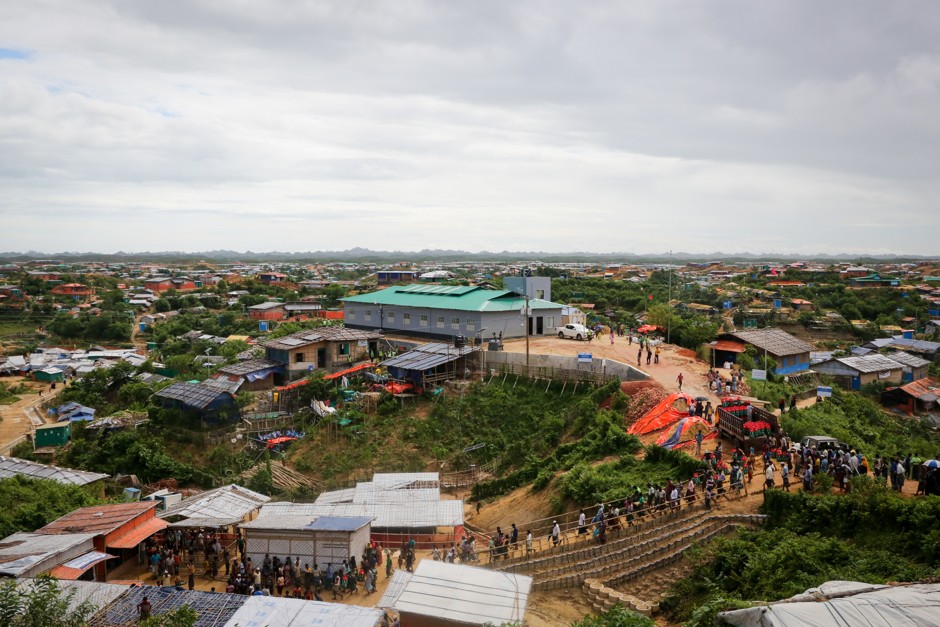
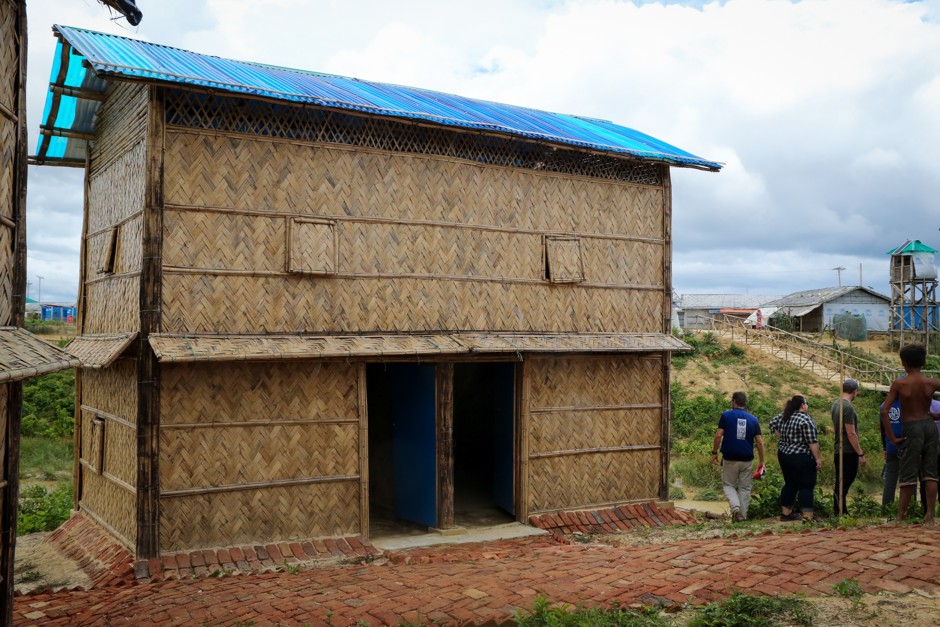
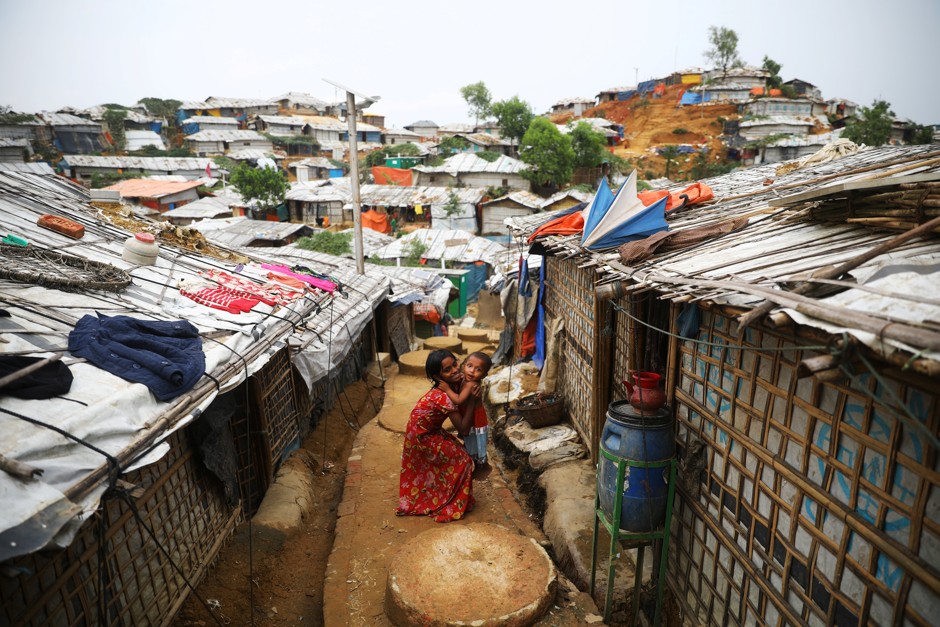







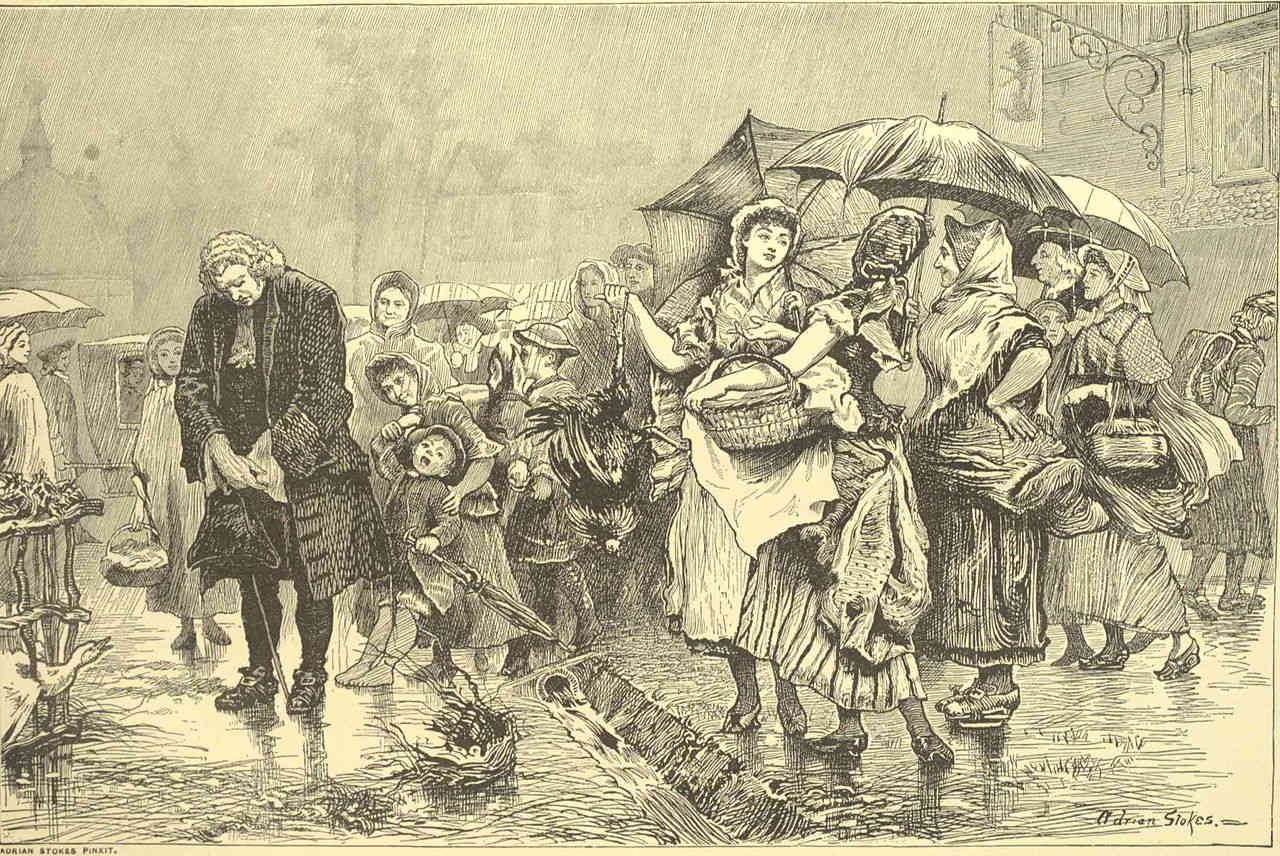



 In Place Vendôme, a woman’s legs, blurred by movement, scissor across a puddle, with the obelisk reflected upside down in the water. In another image, a little boy in shorts with a radiant smile runs home, a baguette under his arm. In a photo from the late 1970s, people are lost in conversation on public phones in the then-new Châtelet-Les Halles metro station, their faces hidden by the curvy cabins—a wry comment, even more so today, on the isolation and anonymity of contemporary life. “I had the vague sensation that I was witnessing the savage meal of a group of carnivorous plants disguised as phones to better deceive human beings,” Ronis commented.
In Place Vendôme, a woman’s legs, blurred by movement, scissor across a puddle, with the obelisk reflected upside down in the water. In another image, a little boy in shorts with a radiant smile runs home, a baguette under his arm. In a photo from the late 1970s, people are lost in conversation on public phones in the then-new Châtelet-Les Halles metro station, their faces hidden by the curvy cabins—a wry comment, even more so today, on the isolation and anonymity of contemporary life. “I had the vague sensation that I was witnessing the savage meal of a group of carnivorous plants disguised as phones to better deceive human beings,” Ronis commented.












